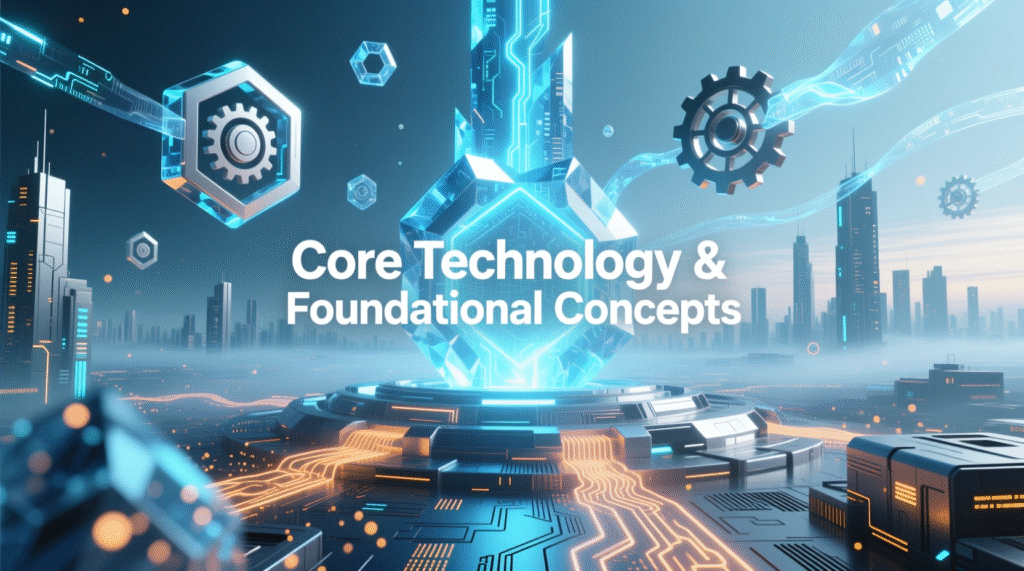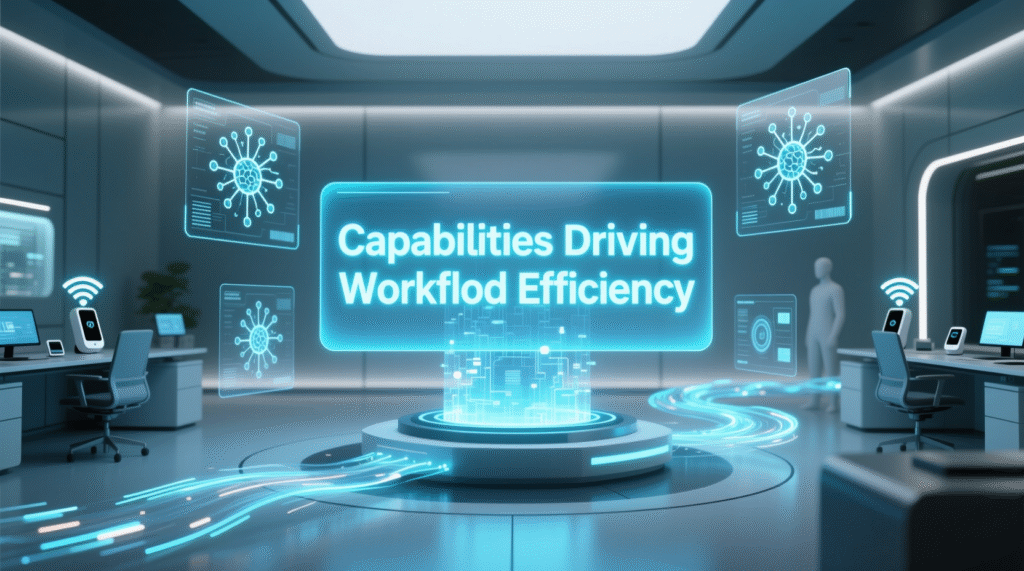Modern businesses are drowning in complexity. Every department juggles dozens of tools, data flows nonstop, and expectations for speed and accuracy have never been higher. This is where the Agentic AI Tool enters the stage. Unlike traditional Artificial Intelligence platforms that react to inputs, agentic AI actively plans, adapts, and executes tasks to maximize workflow efficiency across industries.
This article takes a deep dive into the core technology, practical applications, and future of agentic AI. We’ll also explore how organizations can leverage this transformative tool for productivity enhancement, automation, and operational excellence.
Why Agentic AI Matters Now
Organizations today face a paradox: more tools than ever, yet persistent inefficiency. Employees spend hours toggling between apps, data silos block decision-making, and manual work eats into creative energy. Traditional automation helps, but it often lacks flexibility.
Agentic AI Tools offer a breakthrough. They don’t just automate; they think, plan, and adapt. This makes them ideal partners for businesses seeking digital transformation and intelligent workflows.
Core Technology & Foundational Concepts

What Is the Agentic AI Tool?
An Agentic AI Tool is more than an algorithm. It acts like an autonomous digital agent capable of making decisions, coordinating workflows, and learning from outcomes. Unlike rigid automation scripts, it evaluates context and adjusts strategies in real time.
Key traits of agentic AI:
- Self-directed action: completes tasks without micromanagement.
- Reasoning ability: chooses between multiple strategies for the best result.
- Learning capability: improves continuously from new data.
AI vs. Agentic AI
It’s easy to confuse traditional Artificial Intelligence with agentic AI. Here’s how they differ:
| Feature | Traditional AI | Agentic AI Tool |
|---|---|---|
| Autonomy | Reactive | Proactive, self-directed |
| Adaptability | Limited, rule-based | Dynamic, context-aware |
| Interaction | Narrow input-output | Natural, conversational |
| Collaboration | Standalone model | Multi-agent systems working together |
Key Enablers of Agentic AI
- Machine Learning (ML): core engine for recognizing patterns and improving predictions.
- Natural Language Processing (NLP): enables seamless communication between humans and machines.
- Multi-agent collaboration: multiple AI agents share knowledge and divide complex tasks.
- Real-time data analysis: ensures informed decisions based on the freshest insights.
- Security & ethics framework: builds trust by ensuring transparency, compliance, and safe decision-making.
Capabilities Driving Workflow Efficiency

Process Automation Beyond Basics
Traditional automation focuses on repetitive tasks. The Agentic AI Tool takes it further by orchestrating entire workflows. For example, instead of just sending reminders, it manages project management, reallocates resources, and updates stakeholders automatically.
Intelligent Decision Support
Through data-driven insights, agentic AI enables informed decision-making. Leaders don’t waste time sifting through dashboards; the AI highlights what matters and suggests next steps.
Predictive Diagnostics & Forecasting
In industries like healthcare and finance, predictive analytics helps forecast risks, patient health outcomes, or market changes. This predictive edge makes it easier to pivot strategies before problems escalate.
Dynamic Adaptability
Businesses don’t stand still. The adaptability in AI ensures workflows evolve with shifting regulations, market trends, or consumer behaviors.
Cross-Platform Orchestration
The AI integrates multiple apps into a centralized platform, reducing silos and boosting seamless communication.
Collaborative Intelligence
Rather than replacing humans, agentic AI amplifies human insight and creativity. It handles repetitive grunt work while employees focus on strategic activities.
Key Applications Across Industries
Healthcare
Healthcare providers benefit immensely from agentic AI.
- Patient data management: automatic updates of patient histories and records.
- Medical diagnostics: real-time analysis of health data to assist doctors.
- Personalized treatment plans: AI tailors care plans using predictive diagnostics.
- Operational tasks: scheduling, insurance claims, and administrative paperwork.
Example: A hospital using agentic AI reduced administrative load by 30%, freeing doctors for direct patient care.
Finance
In the financial sector, precision and speed are critical.
- Transaction analysis: monitoring large volumes of activity in milliseconds.
- Fraud detection: spotting anomalies before they escalate.
- Investment decision-making: combining economic indicators and market trends for real-time insights.
- Compliance automation: generating reports that align with regulations automatically.
Case in point: A European bank reduced fraudulent transactions by 42% using real-time anomaly detection powered by an Agentic AI Tool.
Retail
Retail thrives on anticipating demand and personalizing experiences.
- Demand forecasting: predicting consumer demand patterns to avoid shortages.
- Inventory management: optimizing stock levels for each store.
- Customer service enhancement: AI-powered chatbots offering round-the-clock support.
- Consumer behavior analysis: tailoring promotions based on preferences.
- Customer loyalty: improving satisfaction with fast, personalized interactions.
Fact: McKinsey found that retailers using customer experience personalization see up to a 40% increase in revenue.
General Business Operations
- Project management: AI allocates tasks, tracks progress, and anticipates bottlenecks.
- HR management: automates onboarding, monitors employee sentiment, and supports career path planning.
- Team alignment: real-time collaboration tools ensure departments share a unified view.
- Business process optimization: reducing delays across operations by identifying bottlenecks.
Real-World Case Studies & Impact
- Healthcare case: A US hospital integrated AI-driven scheduling, cutting patient wait times by 25%.
- Finance case: A bank saved $50M annually by using AI for fraud prevention and compliance automation.
- Retail case: A global chain increased sales 18% through supply chain optimization and customer service enhancement.
Strategic Benefits for Organizations
- Enhance productivity: Employees spend more time on creative and strategic activities.
- Improve performance: Data-driven insights enable faster pivots and smarter actions.
- Operational excellence: Workflows run smoother with fewer errors.
- Resilience: Companies can adapt to crises thanks to real-time adjustments.
- Competitive edge: Early adopters gain leadership positions in their sectors.
Challenges & Considerations
While powerful, adopting an Agentic AI Tool isn’t without challenges.
- Integration hurdles: Legacy systems may resist change.
- Data privacy: Compliance with regulations like GDPR is essential.
- Over-reliance: Human oversight is still needed for informed decision-making.
- Reskilling workforce: Employees must adapt to new collaboration methods.
- Ethics: Decisions affecting humans require careful governance.
Future Outlook: The Evolution of Agentic AI
The future of agentic AI points toward:
- Self-improving workflows: AI systems learning not just tasks, but strategy.
- Multi-agent ecosystems: networks of AI tools coordinating across industries.
- AI co-pilots: supporting employees as trusted advisors.
- Enterprise transformation: shifting structures toward hybrid human-AI teams.
Prediction: By 2030, 70% of enterprise workflows will rely on intelligent workflows powered by agentic AI.
Conclusion
The Agentic AI Tool isn’t just another piece of software. It represents a paradigm shift in how businesses achieve workflow efficiency, productivity enhancement, and operational excellence. From healthcare diagnostics to financial fraud detection to retail optimization, its applications are vast and transformative.
Organizations that embrace agentic AI today won’t just keep up—they’ll lead. The future of work belongs to those who harness autonomous, adaptable, and intelligent tools to redefine what’s possible.

James Harrington is a writer known for his compelling storytelling and diverse themes. His work blends creativity with thought-provoking ideas, captivating readers across genres. Through his website, DimensionsGo.com, he shares his latest projects, insights, and literary reflections, building a global community of readers and writers.



